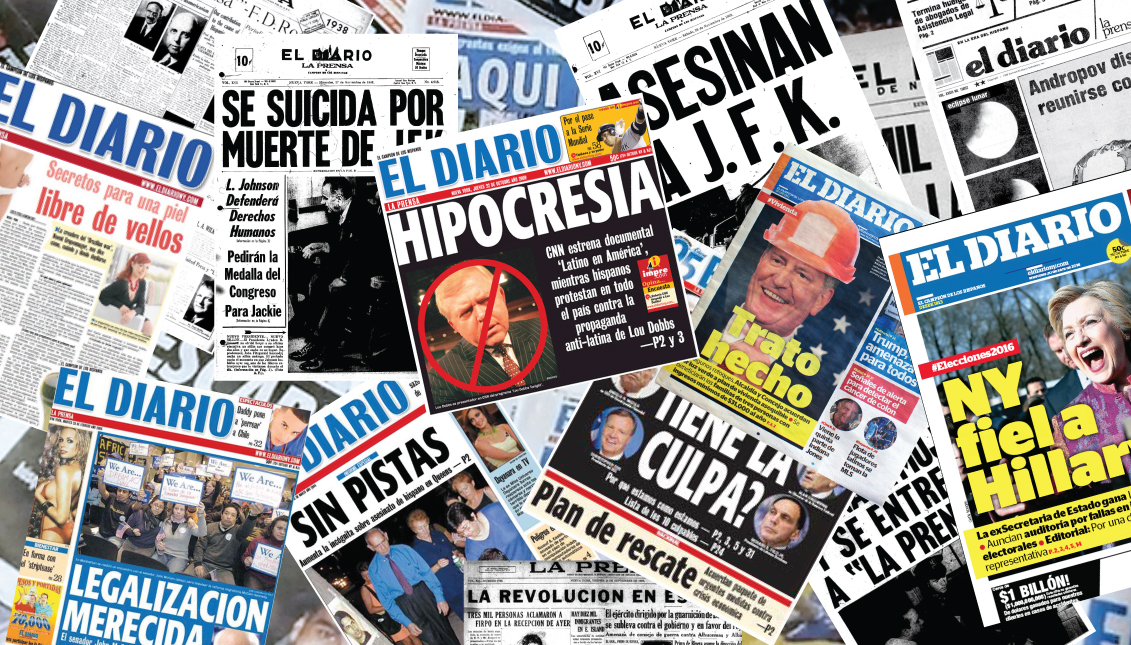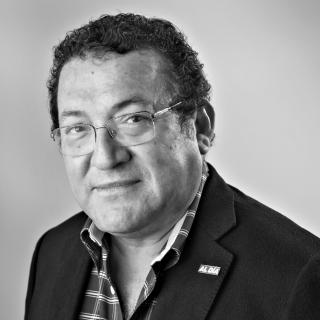
Requiem for 'El Diario'
News of the gradual death of the oldest Spanish-language daily newspaper in the country is something that, sadly, could be the beginning of the end of an
MORE IN THIS SECTION
News of the gradual death of the oldest Spanish-language daily newspaper in the country is something that, sadly, could be the beginning of the end of an era for Hispanic print media in the United States.
Just like it could happen to the rest of the Latino press in the US — which this newspaper has represented for over a 100 years — news of the gradual death of the oldest Spanish-language daily newspaper in the country is something that, sadly, could be the beginning of the end of an era for U.S. Hispanic media.
And I say ‘sadly’, because the death of El Diario-La Prensa, which has an illustrious history of continuously publishing —day in, day out— the news of the Spanish-speaking community in the capital of the world, resurrects all the dead who toiled in its newsroom, generation after generation.
It reminds us of the victories, as well as the defeats, of that brave Latino community, fighting countless wars waged from its columns by a super committed team of intrepid, unafraid, unflinching writers.
It makes us realize, too, that life in an institution where the printed word is cherished belongs ultimately to the community of readers that receive that ‘paged creature’ with respect in their living room, where it changes hands, between young and old in the family, like an indispensable object in the house, or a beloved piece of their own culture owned by everyone.
It is almost a personal matter, as I see in the Puerto Rican community in New York which sensibly reacted to the recent layoffs in the century-old newspaper that they hold as their own, though in reality it belongs to foreign owners now with full control, after they snatched it the last time it was auctioned off.
El Diario seems to tumble down in value every time it changes hands, or the good writers who gave it prestige left, or were laid off.
Or, in one very painful case, was murdered —Wild West, South American-style— as a result of what he dared to write.
As a prosecutor aptly put it at that time: “In this country when somebody is assassinated for telling the truth, all the members of the community become the victims as well.”
This historic fact calls for remembrance today. It happened on March 11th 1992, and the victim was not only Cuban journalist Manuel de Dios Unanue, cowardly killed while he was drinking a beer after work in his way home, but all the community who in New York followed his writing. As a prosecutor aptly put it at that time: “In this country when somebody is assassinated for telling the truth, all the members of the community become the victims as well.”
American democracy, and its cornerstone, the First Amendment to the Constitution, were affronted by Unanue’s coward assassination in a New York restaurant, and it became a shameful memory for those who failed to protect the writer from violent death. For El Diario, the tragic killing of its former star writer became yet another page in the institution’s long history, now with a martyr of its own in the annals of its richly storied past.
Manuel de Dios Unanue, well known to a generation of journalists in New York City, must be in heaven, silent, perhaps a tear rolling down one of his cheeks, looking at the current state of his beloved newsroom, where he was once the feisty squad leader for reporters fighting for the lost causes of the needy Latino neighborhoods in NYC where El Diario — not The New York Times, not El País from Spain, not La Nación from Buenos Aires — was avidly read.

After him, several others came and went from that fierce opinion trench emblazoned by the newspaper that to this day calls itself "The Champion of Hispanics” (El Campeón de los Hispanos).
At a time when New York City was a Mecca bustling, not with undocumented, or undereducated workers of Latino descent, but with the best writers and intellectuals from all over Latin America and Spain.
But many more preceded him, from 1913, at the beginning of the 20th century, when the daily was first published in a New York, at a time the city was a Mecca bustling, not with undocumented, or undereducated workers of Latino descent, but with the best writers and intellectuals from all over Latin America and Spain.
It was the New York City chosen by José Martí as a place of exile for a decade, towards the end of the 19th Century, not long before El Diario was founded, when the Cuban intellectual and poet ended becoming the star NYC correspondent for several newspapers in Latin America, and a contributor for the English-language dailies of the Big Apple, where he once published a blistering column against The Manufacturer newspaper of Philadelphia for its crass depiction of Latinos —which were described in that now disappeared publication as if they were little more than apes.
Martí came to New York some 15 years after his fellow countryman and indirect mentor, Father Felix Varela, also ended up in NYC (after passing through Philadelphia first) in a similar journey of intellectual dissent and political exile from his homeland— not necessarily of his own free choice, but forced by the circumstances in the island of Cuba, then still tightly ruled as a colony by Spain.
The graves of many other notable names whose quills were sharpened in El Diario-La Prensa will shake for an instant when El Diario finally stops breathing as a company— or when it is sold, yet again, to the highest bidder.
Sad, but inevitable, at least for some of us who knew through the years that the courageous spirit that inspired generations, and that was the morale of the team for decades, had deserted a newsroom already battered through the last by all sorts of owners who for decades have seen El Diario as nothing more than a mere commercial object, not the noble institution that for a century was El Campeón de los Hispanos.







LEAVE A COMMENT:
Join the discussion! Leave a comment.